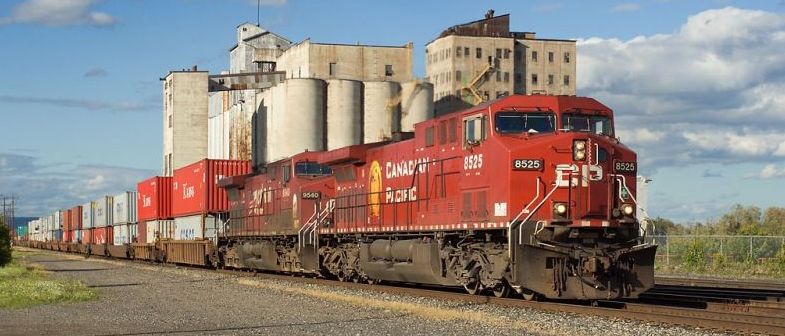
Train Addiction Help Line: 1.866.840.7777
Jan 8, 2021 - HO Scale
Iconic Replicas - HO Scale - PWRS Exclusive - MCI MC-7: Greyhound Canada Pepsi Scheme - Limited Stock!

![]()
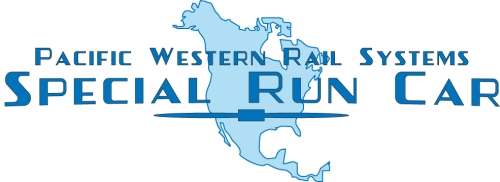

Dear HO Scale customers;
We just got new images of the MCI MC-7 Greyhound Canada Pepsi Scheme Buses!
![]()
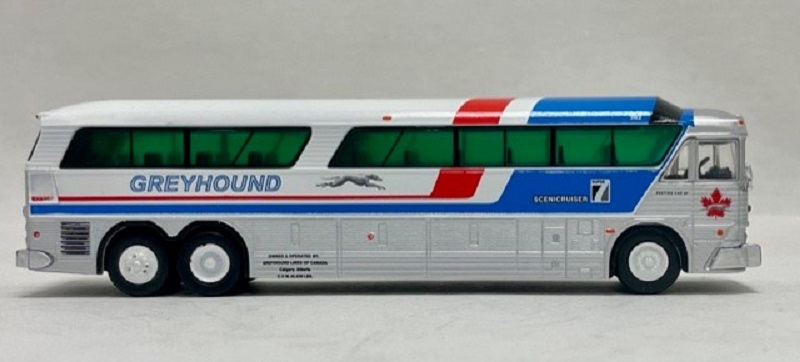
One of our customers asked us why Iconic Replicas weren't doing the classic Greyhounds Pepsi Scheme bus in Canadian markings. We said because we don't have any images. Our customer had pictures and supplied them to us.
![]()
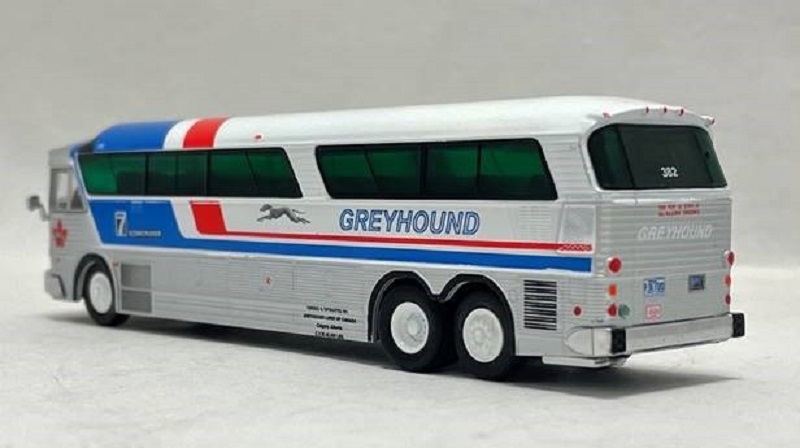
We contacted Iconic Replicas and they have agreed to do the following buses Exclusively for us.
Let's show and explain to the Americans how to have properly built Canadian buses with proper destinations! Order yours today!
Destinations:
Vancouver
Prince George
Calgary
Edmonton
Regina
Winnipeg
Toronto
Niagara Falls
Ottawa
London
Average Number of busses per destinations is 50, total run size is 502.
![]()
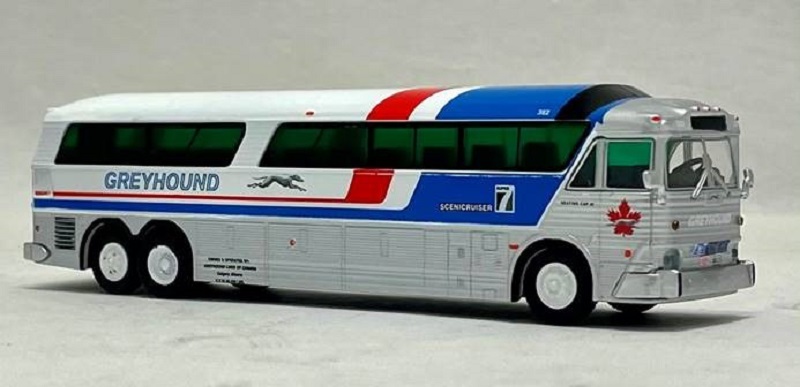
We are excited to announce our next line of exclusive busses!
These new buses will come with the cities the MCI MC-7 Greyhound Canada busses travelled through in Western Canada. (We know becasue one of our customers worked for over 40 years as a manager for Greyhound Canada and has confirmed all the information.)
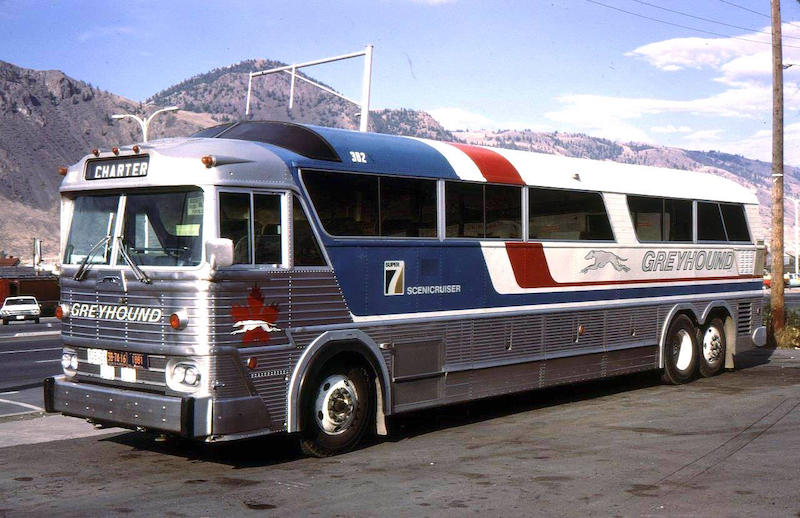
Greyhound Canada History (1970-1979)
1970 - Greyhound purchases northern operator Canadian Coachways.
1978 - After 62 days of hearings the Ontario Highway Transport Board grants Greyhound the right to run a service over the Sudbury-Toronto route.
1979 - Greyhound celebrates its 50th anniversary. The company is acknowledged as Canada's largest bus line by route miles, geographic area and revenues.
Motor Coach Industries (MCI) is a multinational bus manufacturer, specializing in production of motorcoaches. Best known for coaches produced for intercity transit and commuter buses, MCI produces coaches for a variety of applications, ranging from tour buses to prison buses.
Currently, MCI is headquartered in Des Plaines, Illinois. Since 2015, it has been a subsidiary of Canadian bus manufacturer New Flyer (part of the NFI Group).
After the original numbered Courier and MC models, MCI adopted letters for the different series of coaches. Two different schemes have been used:
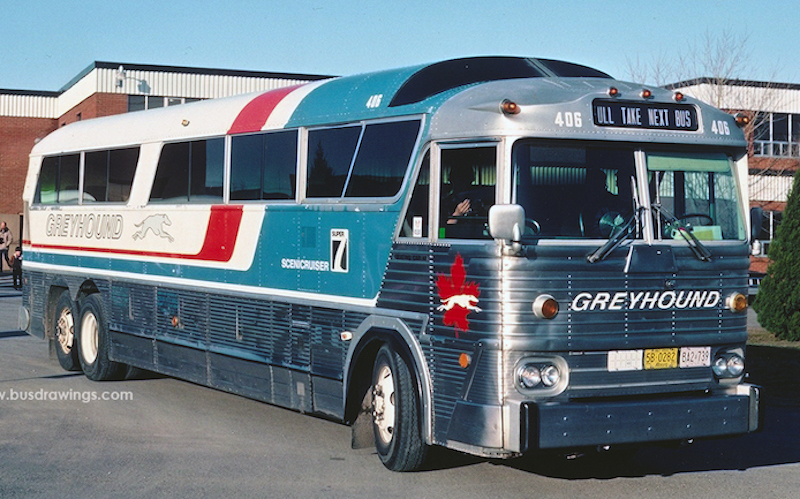
1985–2001
|
Width |
Series |
Option |
Axles |
Body |
|
96 = 96 inches (2.4 m) 102 = 102 inches (2.6 m) |
A B C D E |
L = 45 ft 7 in (13.89 m) length • D and E series only W = wheelchair lift-equipped • A and D series only |
2 3 |
none = aluminum SS = stainless steel • B, C and D series only |
|
Example: 102-DL3SS |
|
|
|
|
2001–present
|
Series |
Length |
Version |
Options (D series only) |
|
|
D E F G J |
35 = 35 ft 5.5 in (10.81 m) 40 = 40 ft 6 in (12.34 m) 41 = 41 ft 7 in (12.67 m) 45 = 45 feet 7 inches (13.89 m) |
00 = 1st 05 = 2nd |
CL = "classic" styling CT = "contemporary" styling (diesel/CNG) CTH = "contemporary" styling (hybrid-electric) ISTV = inmate security transportation vehicle N = 96-inch (2.4 m) narrow body |
|
|
Example: D4500CT |
|
|
|
|
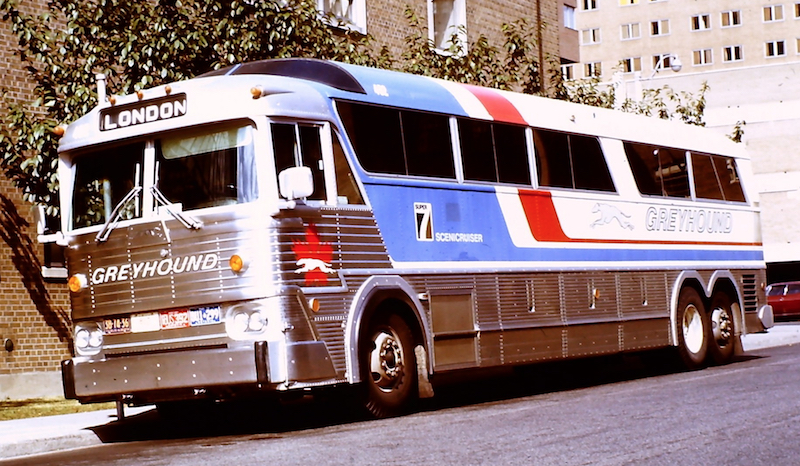
Here is a brief synopsis of the different Greyhound Buses:
Motor Coach Industries
MC5 (1960s-70s) - Single drive axle, some were converted to be Freighters. A bulkhead was installed midway and a side door was installed to load freight.
MC6 (1970s) - The first wide body bus (102 inches) with a drive and tag axle (weight bearing only and could be lifted for more traction). They operated primarily in Canada as a number of US States did not allow wide bodied buses. The last batch were sold and shipped to Guam.
MC7 (1970s) - Was the next generation (drive and tag axle) and was used for a brief time due to high fuel consumption. Some were converted to be Freighters by changing the rear tag axle to a drive axle. Unfortunately they tended to be light in the front end when fully loaded.
MC8 (1980s) - Were the first efficient MCI buses, they had Cummins Engines and Allison Transmissions. They were easy to operate and had clean lines. Some were converted to be Freighters bus due to a stronger rear suspension they retained their drive and tag axle configuration.
MC9 (1980s-90s) - Were a good solid work horse and formed a large portion of the Greyhound Fleet. They were the last Greyhound Buses to be converted to Freighters. The last Greyhound Freighter operated on Vancouver Island.
MC12 (1980s-90s) - Were only built for Greyhound and operated in the US. They differed from the MC9 as they had square headlights and rear lights which became the norm for the next generation of buses.
102A3 / 102B3 / 102C3 / 102D3 (1980s-2000s) - Were the next batch of MCI buses to be wide bodied. There were 4 variations, the rear of the body changed, A/B/C had a sloped rear and small fans, the D series had a square back and two large fans. They were one of the most numerous MCI buses in Canada and the US.
102DL3 (1990s-2000s) - The D model was extended to 45 feet and was the first buses to be 45 feet and carry 55 passengers. This model became the backbone of the Greyhound Fleets and are still operating today. These units can be found still operating in many Charter and Scheduled Companies.
D4505 (2000s-current) - They replaced the 102DL3 and came into Greyhound Canada around 2006 (37 Units) and were equipped with Cummins Engines and ZF Transmissions. That model is still in production and newer units have been added to both Canadian and US Fleets.
G4500 (1999-2002) - These were designed in conjunction with Greyhound and MCI and were intended to be a deluxe highway bus to compete with the Prevost H345. They proved to be an unreliable bus due to electrical and body fitting issues. Approximately 350 were built and a few are still operating in Greyhound service.
Prevost
H345 (1990s-current) - Greyhound operated several of these units in their subsidiary companies (Grey Goose) and in the East on the routes between Ottawa, Toronto and Montreal. They are a very nice bus with a large passenger, freight and luggage space. They have become one of the most successful Charter Buses and are still being produced.
XL-3 (2010-current) - Greyhound started to acquire these units due to their reliability and comfort. They are currently used by Greyhound in Canada and the US, they also are used by Greyhound’s low cost Bolt Bus and are still being produced.
Note; if you want 4 destinations you need to buy 4 busses so you have one for each destination.
Looking for more Iconic Replicas Busses? Click here for in stock items!
Order Due Date: June 30th, 2020
Anticipated Delivery Date: February, 2021




